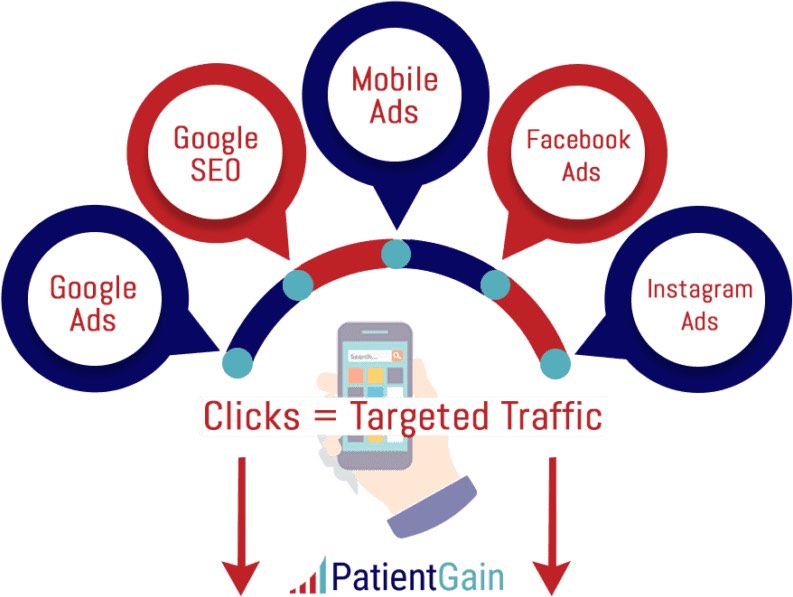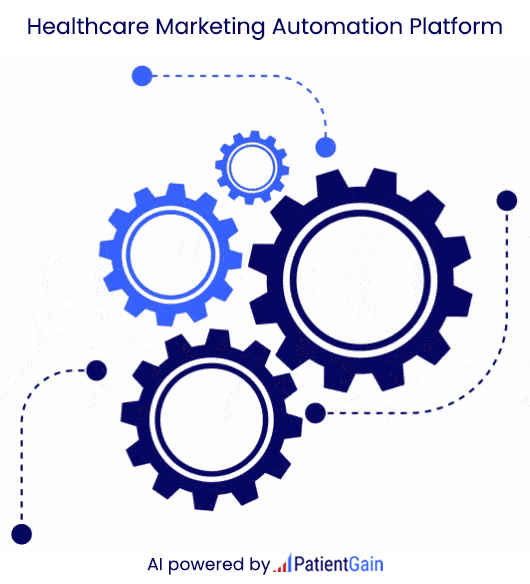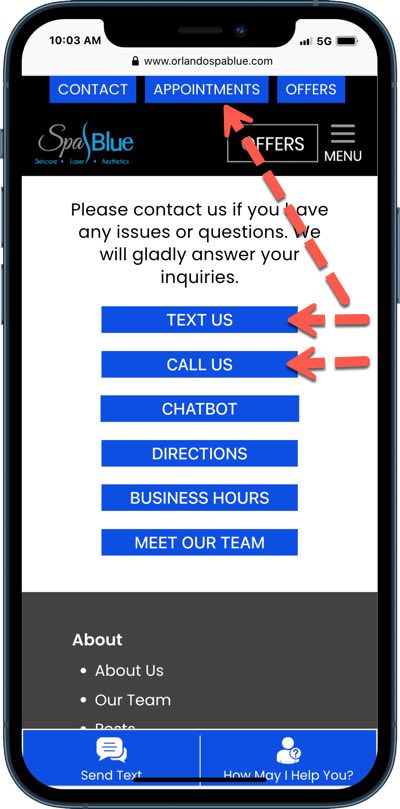Direct Response Marketing (DRM) for Medical Practices
Direct response marketing for medical practices involves using various channels to directly communicate with patients and generate a measurable response, like scheduling appointments or requesting more information. This can include direct mail, social media, email, and even print advertising, with the goal of attracting new patients and strengthening relationships with existing ones.


What Is Direct Response Marketing for Medical Practices?
Direct response marketing is a strategic approach focused on prompting an immediate, measurable action from prospective patients. Unlike general brand-awareness campaigns, its primary goal is to generate leads and directly attributable results, such as appointment bookings, inquiries for specific services, or downloads of health-related information. For medical practices, this means employing targeted tactics designed to elicit a specific response, making it a highly accountable and potentially cost-effective marketing strategy.
Key Characteristics of Direct Response Marketing in a Medical Context
At its core, direct response marketing for medical practices is defined by several key characteristics:
- Clear Call-to-Action (CTA): Every marketing piece includes a specific instruction telling the prospective patient what to do next — for example, “Call to schedule your free screening,” “Download our guide to managing back pain,” or “Book your consultation online today.” Urgent care campaigns might use, “Walk-In, Get Care Fast! No Wait Time for Urgent Care in [City Name].”
- Measurability and Trackability: Campaigns are designed so that responses can be tracked precisely. Practices use tools such as unique phone numbers, dedicated landing pages, offer codes, and integrated dashboards (services like PatientGain.com provide this functionality) to monitor calls, form submissions, and online bookings.
- Targeted Audience: Campaigns focus on specific demographics or health concerns to increase relevance and effectiveness. For instance, a pediatric practice may target families with young children in particular zip codes.
- Compelling Offer: To drive immediate action, offers may include discounted consultations, free informational resources (e.g., a downloadable guide on “Preparing for a Colonoscopy”), limited-time specials, or early access to webinars. An urgent care center might offer “$10 Off Your First Visit.”
- Sense of Urgency: Many direct response campaigns incorporate deadlines or scarcity cues, such as “Offer ends this month” or “Limited spots available,” to motivate quick patient responses.
- Personalization: When appropriate and compliant with privacy regulations like HIPAA, messages can be personalized to increase engagement, such as segmenting emails or tailoring ad copy based on previous patient interactions.
How Direct Response Marketing Differs from General Medical Marketing
Traditional marketing often focuses on long-term brand recognition and trust-building — like billboards or broad awareness campaigns where results are difficult to measure directly. In contrast, direct response marketing targets immediate patient engagement with clear, trackable actions. For example, instead of a general ad for a clinic, a direct response campaign might offer a free webinar registration or a discounted consultation with a direct online sign-up, providing real-time metrics and ROI.
What are the Benefits of Direct Response Marketing for Medical Practices?
- Increased Patient Acquisition: Direct response campaigns actively encourage new patients to engage, often tracked through lead generation platforms.
- Measurable ROI: Tracking responses allows practices to understand which marketing spends generate appointments and patient inquiries.
- Cost-Effectiveness: Targeted efforts reduce wasted spend by focusing on relevant patient groups and optimizing campaigns.
- Targeted Reach: Enables connection with specific patient segments based on demographics, location, or health needs.
- Consistent Lead Pipeline: A well-run campaign maintains steady potential patient flow, often managed via CRM integration.
- Enhanced Patient Engagement: Valuable content and follow-ups help build ongoing relationships.
- Improved Campaign Optimization: Data allows continuous testing and refinement of messaging, offers, and channels.
Examples of Direct Response Marketing Incorporating PatientGain.com’s Platinum Service
PatientGain’s Platinum Service offers an integrated platform designed to support every step of direct response marketing for medical practices, ensuring compliance, measurability, and ease of use.
1. Online Advertising (PPC)
- A practice runs Google Ads for “GERD treatment [City]” using PatientGain’s campaign management tools. The ads highlight a “Free Consultation” CTA.
- Clicking leads to a fast-loading, HIPAA-compliant landing page with a “Schedule Your Appointment Today” form.
- All calls, form submissions, and bookings are tracked in the PatientGain dashboard.
2. Social Media Ads
- A Direct Primary Care (DPC) practice targets parents with Facebook ads: “Skip the insurance headaches! Unlimited primary care for $XX/month. Schedule a free meet-and-greet today!”
- The ad links to a PatientGain-powered booking form optimized for mobile users.
3. Direct Mail with Digital Integration
- Postcards to new movers offer a discount for dental check-ups with a unique promo code.
- QR codes link recipients to PatientGain-managed online scheduling pages, allowing tracking from physical mail to digital conversion.
4. Email Marketing & Automation
- Segmented email newsletters announce a new flu shot clinic with a “Book Your Flu Shot Now” button.
- Automated “We Miss You” campaigns target inactive patients with personalized offers to schedule check-ups.
5. Dedicated Website & Landing Pages
- A weight loss clinic features a SEO-optimized landing page for “Medical Weight Loss [City]” with patient testimonials and a prominent form to request consultations, managed through PatientGain’s reputation and website tools.
6. Free Screenings & Webinars
- Dermatology practices advertise “Free Skin Cancer Screenings” with CTAs to call a tracked phone number or register online.
- Cardiology groups promote webinars on “Heart Health After 50” through PatientGain’s email and social media integrations, capturing leads into CRM.
7. SMS/Text and Chatbots
- Two-way texting apps allow patients to ask questions or book appointments via SMS.
- HIPAA-compliant chatbots on websites guide users through FAQs and appointment scheduling 24/7, capturing leads even outside office hours.
Implementing a Direct Response Marketing Strategy with PatientGain.com
Medical practices can streamline direct response marketing by leveraging comprehensive platforms like PatientGain:
- Audience Definition: Use data insights to precisely target patient groups.
- Compelling Offers & Messaging: Develop clear, strong CTAs with expert copywriting support.
- Channel Selection & Website Optimization: Ensure mobile-friendly, HIPAA-compliant, and SEO-optimized websites with fast loading times and easy conversion points.
- Advertising Management: Utilize certified ad specialists to manage Google, Facebook, and Instagram campaigns targeted by demographics and geography.
- Reputation & Directory Management: Maintain consistent business listings and monitor online reviews with integrated tools.
- Tracking & Analytics: Use dashboards to measure leads, cost per acquisition, ROI, call volumes, and conversion rates.
- Continuous Improvement: Employ A/B testing and data analysis to refine campaigns.
Ethical Considerations in Medical Direct Response Marketing
- Advertisements must be truthful, evidence-based, and non-misleading.
- Transparency in advertising and clear HIPAA compliance are essential.
- Patient privacy must be protected, with proper consent when PHI is involved.
- Marketing should maintain professional dignity and focus on patient benefit over volume.
Summary
Direct response marketing is a powerful, results-driven approach for medical practices aiming to grow patient volume and engagement efficiently. With tools like PatientGain’s Platinum Service, practices gain access to HIPAA-compliant, integrated marketing technology that simplifies campaign management, enhances patient conversion, and provides detailed performance tracking. This combination of targeted offers, clear CTAs, and measurable outcomes makes direct response marketing a cornerstone strategy for modern healthcare providers.

